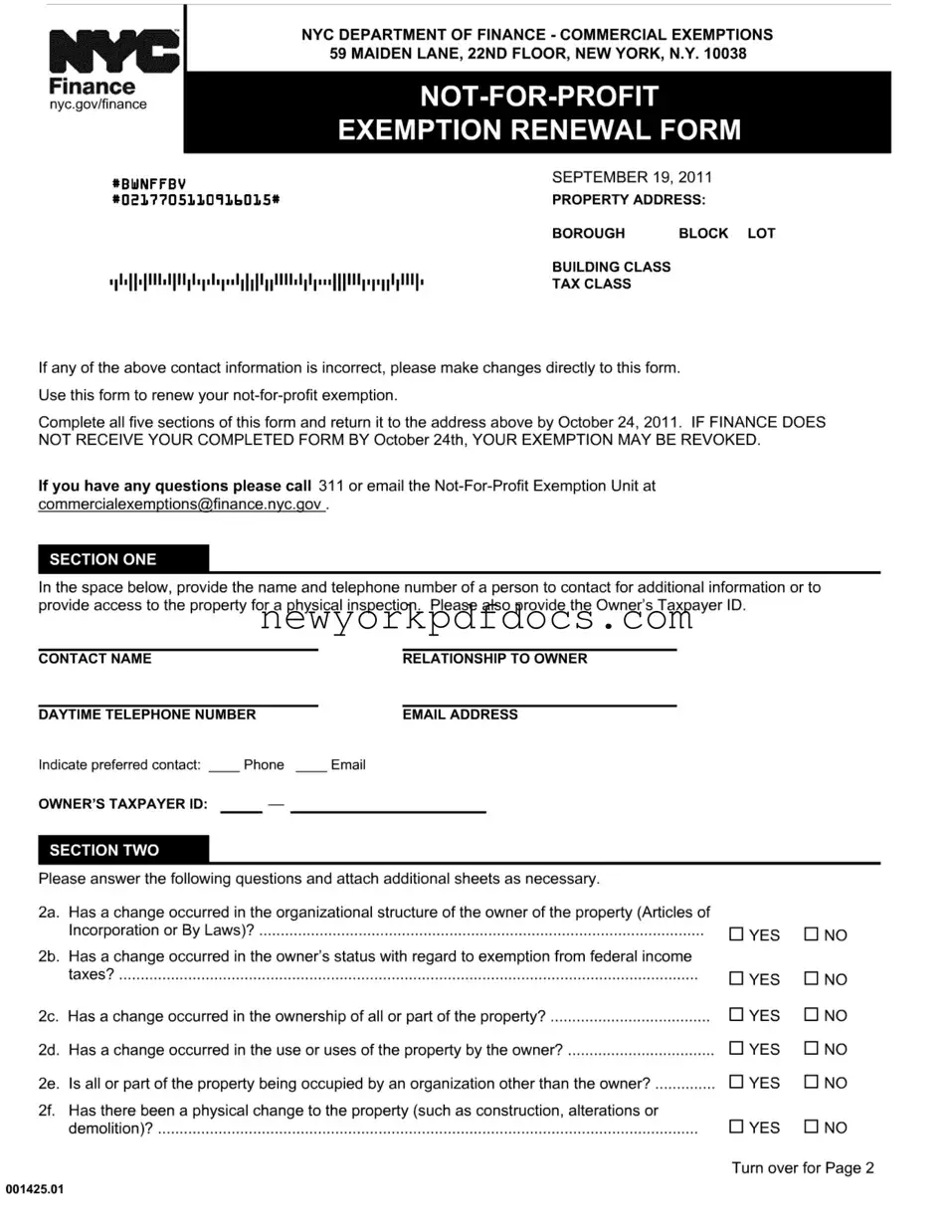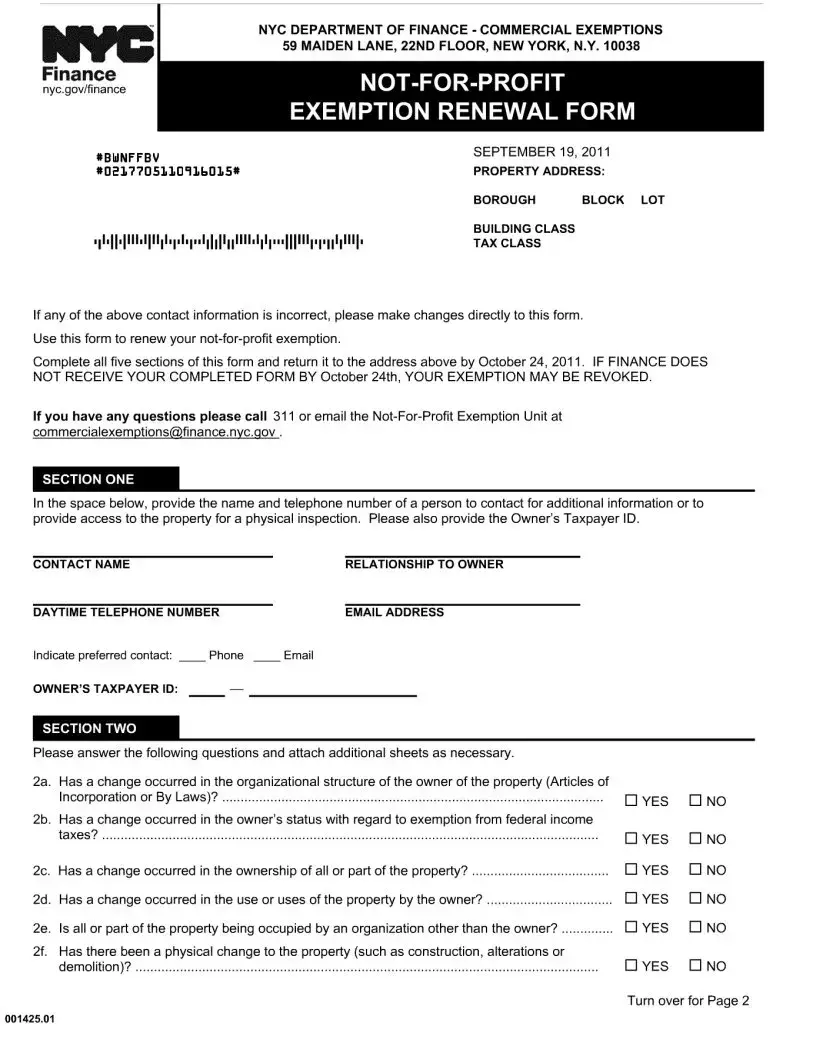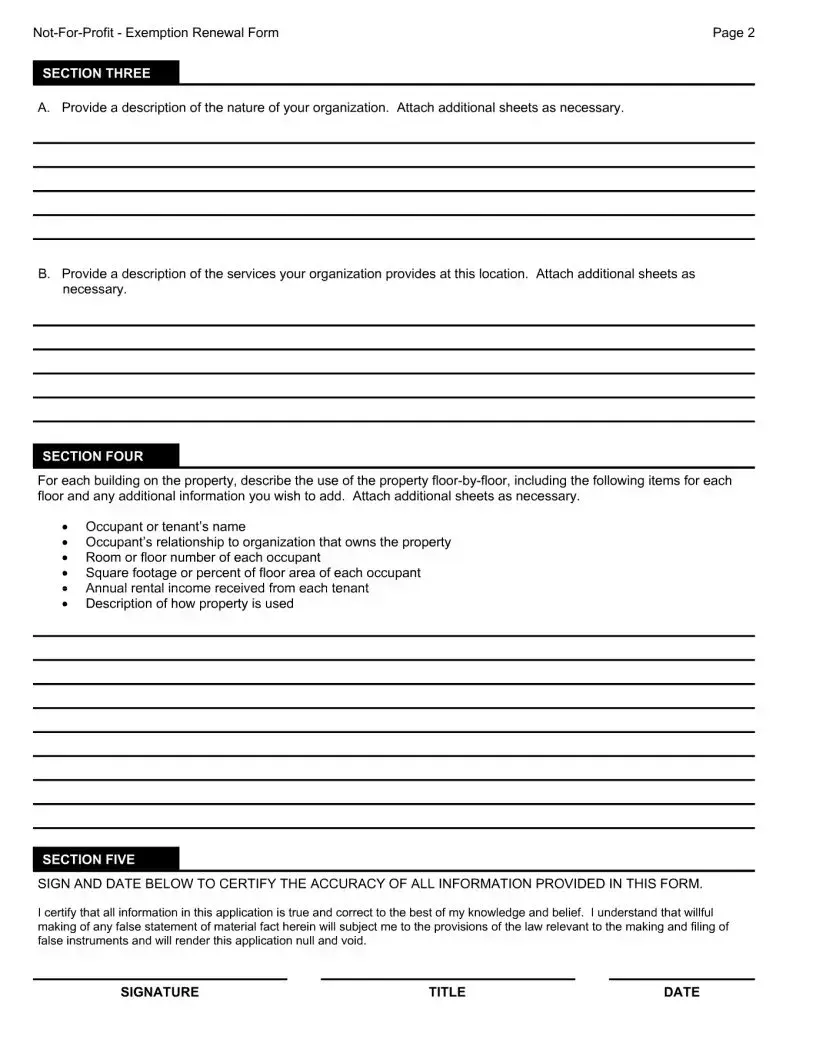Filling out the Non Profit Exemption Renewal form for NYC can be straightforward, but many people make common mistakes that can lead to delays or denial of their exemption. Here are nine mistakes to avoid.
First, many applicants forget to provide complete contact information. It's essential to include a name and a daytime telephone number for someone who can answer questions or grant access for inspections. Omitting this information can result in unnecessary complications.
Second, failing to update the Owner’s Taxpayer ID is a frequent error. If the ID has changed, it must be accurately reflected on the form. Incorrect information can lead to processing issues.
Another common mistake is not answering all questions in Section Two. Each question regarding changes in organizational structure, ownership, or property use must be addressed. Leaving any question unanswered can raise red flags and delay the renewal process.
Additionally, some applicants neglect to provide detailed descriptions of their organization and services. Section Three requires specific information about the nature of the organization and the services provided. Vague or incomplete descriptions can hinder the review process.
In Section Four, applicants often overlook the need for a thorough description of property use. Each floor's details, including tenant names, relationships, and rental income, must be clearly outlined. Incomplete information can lead to confusion and potential denial of the exemption.
Another mistake is not signing and dating the form in Section Five. This certification is crucial. Without a signature, the form is considered incomplete, which can result in rejection.
Some applicants also miss the submission deadline. The completed form must be returned by the specified date. Late submissions can lead to the revocation of the exemption.
Lastly, many individuals fail to keep copies of their submitted forms. Having a copy is important for future reference and can help if any issues arise during the review process.
By avoiding these common mistakes, applicants can ensure a smoother renewal process for their Non Profit Exemption in NYC.


